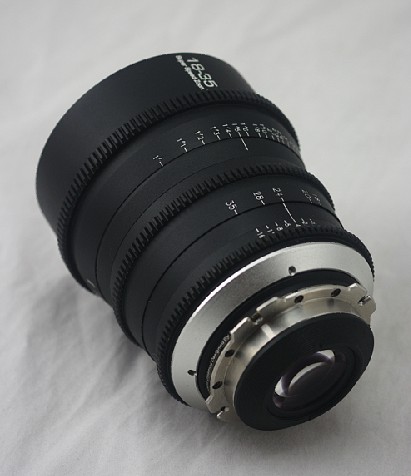

My copy of this lens did not, and I have not heard widespread reports of others having issues, either.

Given Sigma’s past infamy with the issue, I think every review from now until the end of time concerning a Sigma lens will address whether it has front or back-focus issues. The 11″ minimum focus distance is also a nice feature, and one I found myself using when it came to food photos. In fairness, this was partly due to the exceptional autofocus on the Canon 7D I was using (I love Nikon, but that camera has better autofocus than any Nikon I’ve ever used), but a big part of the equation was the Sigma 18-35mm f/1.8. I was actually shocked by this at first, and there were a couple of occasions I thought my autofocus must have not been working because I didn’t hear it at work. The autofocus here is lightning fast, quiet, and accurate. In terms of performance, let’s start with autofocus. Those used to kit lenses might be taken aback at first, because this lens is significantly larger than those (and larger than its closest competitors). I really hope Sigma sticks with this style, as I think it’s excellent. In terms of design, everything about this lens is nice. The zoom and focus rings also move smoothly with just the right amount of resistance. The lens has great heft to it, and if I didn’t know otherwise, I’d think it were a metal lens. Sigma states that this material has a “ high affinity to metal parts,” and while this might just seem like marketing fluff, I think it’s true. However, it doesn’t feel like a plastic lens. The Sigma 18-35mm f/1.8 is built of “Thermally Stable Composite,” which is fancy Sigma-talk that essentially means plastic. Much like the Sigma 35mm f/1.4, this lens is built incredibly well.
#Focus problems sigma 18 35 1.8 full#
These buzzwords have been thrown around since the lens was announced, and obviously the hype machine is in full force with the Sigma 18-35mm f/1.8.įirst order of business: design and build. Starting the review with phrases like “world’s first” and “revolutionary” alone implies something about this lens. The class-leading Sigma 35mm f/1.4 is also part of the “Art” line, so right from the get-go, the bar is high.īefore getting started with the review, I think it’s worth taking a step back.

This lens is part of Sigma’s new “Art” line, which is one of Sigma’s upper end lines introduced as part of Sigma’s reinvention. In this review of the revolutionary Sigma 18-35mm f/1.8 crop sensor lens, we’ll cover its real world performance, along with a number of sample photos, and a recommendation for the types of photographers for whom this lens might suit best. For 35mm shooting, the company's full-frame 35mm 1.4 DG HSM lens is a little sharper, but if you need the flexibility of a zoom it's worth the convenience trade-off.The Sigma 18-35mm f/1.8 is the world’s first constant aperture f/1.8 zoom lens.
.jpg)
Its nine-bladed aperture renders beautiful out-of-focus areas, and I didn't see any vignetting. The edge-to-edge sharpness at both ends looks good, too. There's some aberration (fringing) on both sides at 18mm and in the center at 35mm f1.8, but at 18mm it's quite sharp in the center from wide open to f11, and as expected gets a little soft at f16 at 35mm it's sharp from f2.0 to just under f16 as well. Its image quality is generally excellent. MountsĬanon EF-S (tested), Nikon DX, Sigma, Sony Aġ8-35mm (28.8 - 56 equivalent on Canon 27 - 52.5 on Nikon and Sigma)Īpproximately 76.5 - 44.2 degrees (depending on focal length)ġ7 elements in 12 groups 1 aspherical with Special Low Dispersion (SLD) glass The manual-focus ring has a nice feel for gradual focus, however. This isn't a noisy lens for video autofocus, but it is a slightly slow mover in conjunction with continuous AF. My coarse metric for performance when shooting stills is the profanity factor, as in how often I find myself epitheting "Why are you so slow?" I don't remember cursing the lens out at all it kept up with my primary test camera, the 7D, pretty well. It's also supported by Sigma's optional USB dock, which allows you to manage and configure lenses and firmware updates. Of course, this isn't an issue for Sony bodies that use sensor-shift stabilization. If you shoot video without a rig, it's essential. I know it's rare to have optical image stabilization in wide-angle lenses (and many manufacturers will tell you it's unnecessary), but I really would like it.
#Focus problems sigma 18 35 1.8 manual#
It's not a particularly feature-rich lens - aside from the manual/auto focus switch there's a distance readout window for the manual focus and focal-length indicators for the zoom ring, but that's about it.


 0 kommentar(er)
0 kommentar(er)
